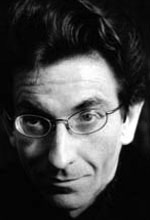Zeitoper, single scene micro-opera for modern times, enjoyed a brief vogue in the Weimar era, but disappeared as fast the Republic itself. This programme from the Continuum Ensemble resurrected four examples, all from the years 1927-28, to offer a snapshot of Germany’s quickly evolving music theatre scene between the wars. The works, by Hindemith, Ernst Toch and Kurt Weill, are short, with little narrative, and even less musical subtlety. But the sheer invention and energy were satisfying compensation, and although these works probably deserve their obscurity today, making their acquaintance turned out to be a lot of fun.
Hindemith and Toch take aim at 19th-century melodrama in their short satires. In Hindemith’s Hin und Zuruck, here sung in English as There and Back, a cheerful conversation between a husband and wife descends into a quarrel, and then a shooting. The sheer speed at which this occurs is absurd enough, but to drive the point home, the ending of the piece plays out the whole story in reverse – ensuring an automatic happy ending. Through all this, Hindemith writes colourful, energetic music, continuously propelled by two percussive piano parts, churning away behind the wind-heavy chamber ensemble.
Toch takes a similar tack in Egon and Emilie (again sung in English translation). His disputing couple are Egon, who won’t speak, and Emilie, who won’t stop. She sings throughout, in florid coloratura, imploring him to respond. Here again, the music is deliberately unsubtle, a clarinet-heavy ensemble delivering angular, bitonal harmonies. But the instrumental parts also contribute to the comedy, interrupting the flow and reducing to incessantly repeating figures every time Emilie stops to expectantly await a response.
More serious fare from Kurt Weill opened the second half, his Vom Tod im Wald, a bass scena originally intended for his Berliner Requiem. The sombre mood is set from the start by the two trombones and continued by the bass soloist (Barnaby Rea) and the woodwind and brass ensemble, with evocative contributions from a harmonium. This was the most emotive piece here, and also the most sophisticated, though in the context it was difficult to hear either qualities as a virtue.
 Mahagonny Songspiel ended the programme. This was Weill’s trail run for the more extended Rise and Fall of the City of Mahagonny three years later. The Songspiel is for six singers and 11 instrumentalists. The singers all take named roles, but perform more as an ensemble than as soloists. Most of the music sounds jazz-inspired, but the sources are always kept at arm’s length, with Weill continually complicating the rhythms (even those on the drum kit) and introducing dense, austere harmonies.
Mahagonny Songspiel ended the programme. This was Weill’s trail run for the more extended Rise and Fall of the City of Mahagonny three years later. The Songspiel is for six singers and 11 instrumentalists. The singers all take named roles, but perform more as an ensemble than as soloists. Most of the music sounds jazz-inspired, but the sources are always kept at arm’s length, with Weill continually complicating the rhythms (even those on the drum kit) and introducing dense, austere harmonies.
Staging here was limited. Earlier some arm actions served for the Hindemith and there were a dramatic entrance and exit in the Toch. But that was as much as either of those works needed. Mahagonny seemed all the more provisional for its rigid concert performance, but again, drama seemed beside the point. The generally young Continuum Ensemble gave proficient performances, giving each of these scores their due measure of colour and energy. Mahagonny sagged a little towards the end, though, with the players losing the crispness and edge that had made the Hindemith in particular such a success. Vocal performances were all strong. Donna Bateman was suitably over-wrought as Toch’s Emilie, and Barnaby Rea appropriately dark-toned in Vom Tod in Wald. The pick of the voices, though, was Anna Dennis, both as the wife in the Hindemith and as Bessie, the soprano role in Mahagonny. Meanwhile, top honours go to Philip Headlam (pictured above), not only for his proficient conducting but also for instigating and programming this concert and the Swept Away season of which it is a part. Further concerts this weekend explore more music from these composers, as well as Krenek, Wolpe and Schulhoff.














Add comment